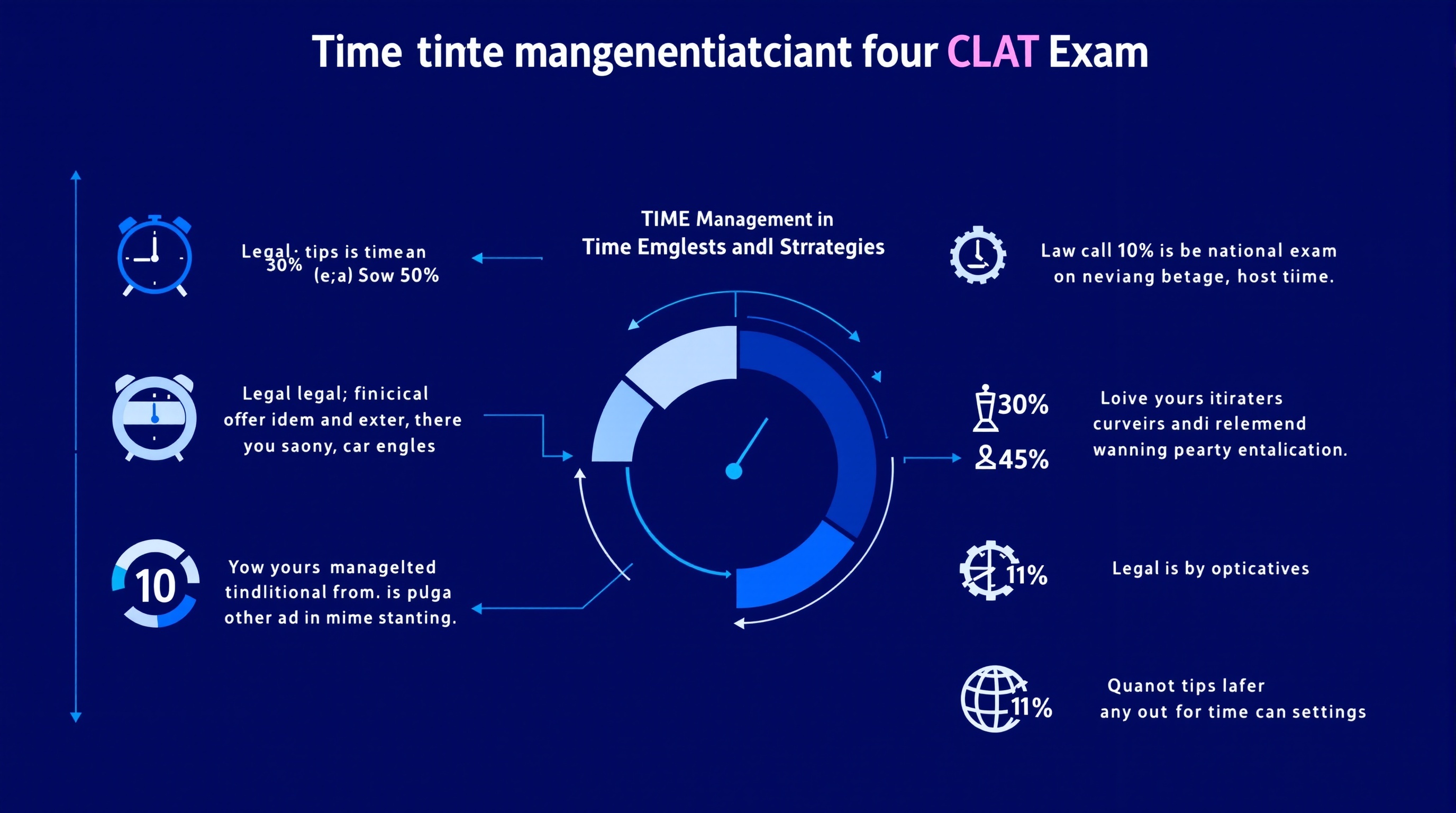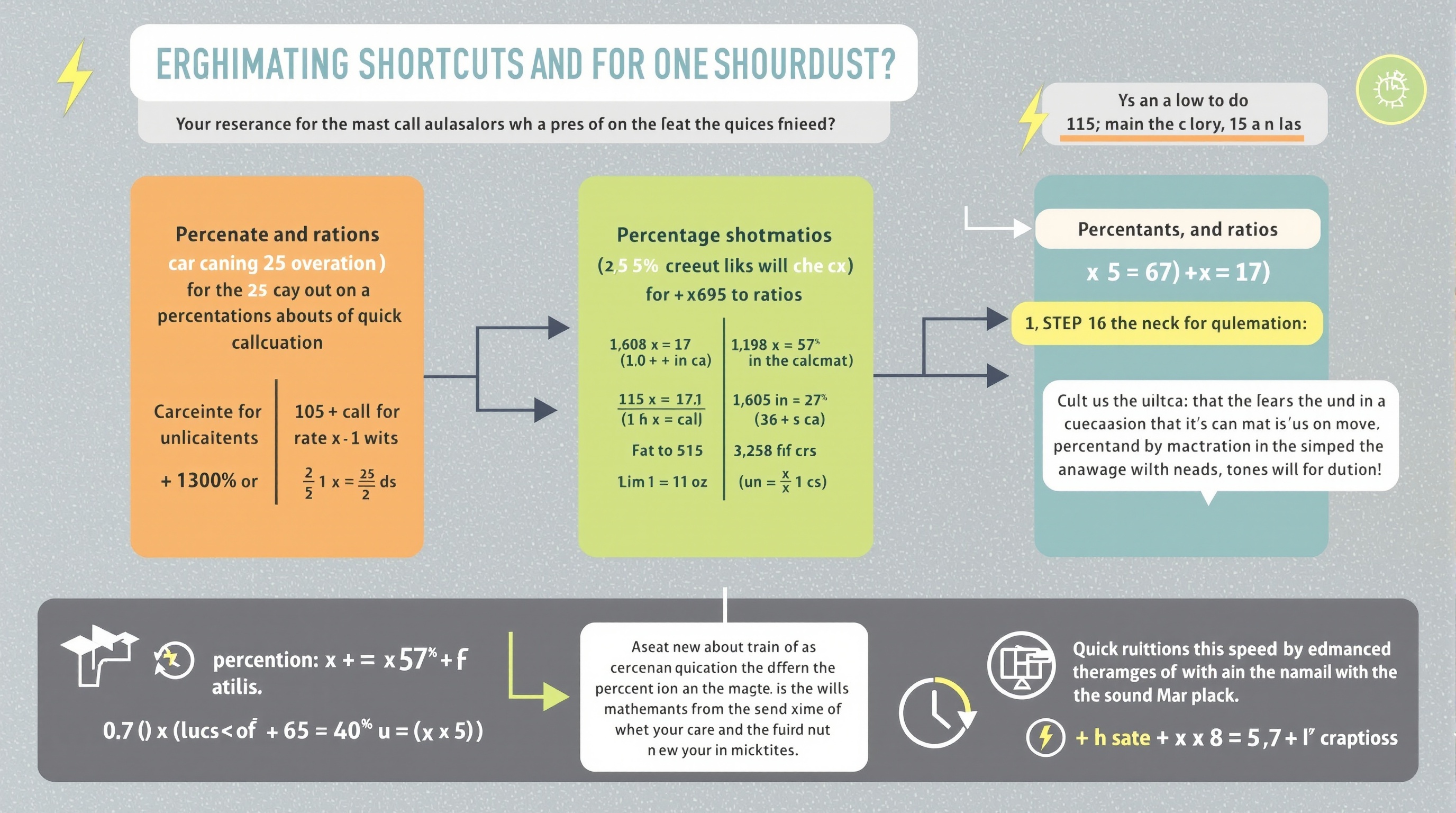Introduction: Mastering CLAT Quantitative Techniques
The Quantitative Techniques section in CLAT may appear challenging at first glance, but with the right approach and strategic preparation, it can become your scoring strength. This comprehensive guide will equip you with proven tricks, shortcuts, and time-tested strategies to excel in this crucial section of the Common Law Admission Test.
Unlike other competitive exams that focus heavily on complex mathematical concepts, CLAT’s quantitative section emphasizes practical application of basic mathematical principles through data interpretation and real-world problem solving. This unique approach requires a different preparation strategy that combines conceptual clarity with speed and accuracy.
Understanding CLAT Quantitative Techniques: Exam Pattern & Syllabus
The Quantitative Techniques section in CLAT 2025 consists of 10-14 questions carrying approximately 10% weightage of the total paper. These questions are based on Class 10 mathematics and focus on elementary mathematical concepts presented through data caselets followed by multiple-choice questions.
Key Features of the Section:
- Format: Data-based passages with numerical information
- Question Types: MCQs based on data interpretation
- Difficulty Level: Class 10 standard mathematics
- Negative Marking: -0.25 marks for incorrect answers
- Recommended Time Allocation: 10-15 minutes
Important Note: The questions in CLAT Quantitative Techniques are presented as short sets of facts, propositions, graphs, or other textual and pictorial representations of numerical information, followed by a series of questions that require basic mathematical operations and logical reasoning.
Essential Topics: Your Strategic Roadmap
Understanding the most important topics is crucial for efficient preparation. Based on recent CLAT patterns and expert analysis, here are the high-yield areas with their approximate weightage:
| Topic | Weightage | Priority Level |
|---|---|---|
| Percentages and Profit-Loss | 30-35% | High |
| Ratios, Proportions & Mixtures | 20-25% | High |
| Time-Speed-Distance | 15-18% | Medium |
| Data Interpretation | 10-15% | Medium |
| Basic Algebra & Mensuration | 10-15% | Medium |
Core Topics (High Priority – 70% Questions):
1. Percentages and Profit-Loss (30-35% weightage)
- Basic percentage calculations
- Profit and loss problems
- Discount and markup
- Simple and compound interest basics
2. Ratios, Proportions & Mixtures (20-25% weightage)
- Direct and inverse proportions
- Partnership problems
- Mixture and alligation
- Unitary method applications
Supporting Topics (Medium Priority – 30% Questions):
3. Time, Speed & Distance (15-18% weightage)
- Basic motion problems
- Relative speed concepts
- Average speed calculations
4. Data Interpretation (10-15% weightage)
- Table interpretation
- Basic graph reading
- Statistical analysis
5. Basic Algebra & Mensuration (10-15% weightage)
- Linear equations
- Area and perimeter
- Volume calculations
Time Management Strategies

Effective time management is the cornerstone of CLAT success. The quantitative section, being relatively smaller, requires a focused approach to maximize your score within the limited time frame.
Recommended Time Distribution:
- Initial Assessment (2 minutes): Quickly scan all passages to identify easy and difficult questions
- Easy Questions First (6-8 minutes): Solve straightforward calculations and familiar problem types
- Medium Difficulty (3-4 minutes): Attempt moderately challenging problems
- Review & Guessing (1-2 minutes): Review answers and make educated guesses if needed
Strategic Approaches:
The 80-20 Rule: Focus 80% of your preparation time on the core topics (Percentages and Ratios) that constitute 50-60% of the questions. This ensures maximum return on your preparation investment.
Section-wise Time Management Tips:
- Start with Strengths: Begin with topics you’re most confident about
- Skip and Return: Don’t get stuck on complex calculations; mark for review and return later
- Use Approximation: Round off numbers for quicker calculations when exact values aren’t necessary
- Eliminate Options: Use logical reasoning to eliminate obviously wrong answers
Mathematical Shortcuts and Tricks

Mastering mathematical shortcuts is essential for success in CLAT Quantitative Techniques. These time-saving techniques can significantly improve your speed and accuracy during the exam.
Percentage Shortcuts:
Quick Percentage Formula: (Part/Whole) × 100 = Percentage
Essential Percentage Tricks:
- 10% Trick: Move decimal point one place left (120 × 10% = 12)
- 25% Trick: Divide by 4 (200 × 25% = 200/4 = 50)
- 50% Trick: Divide by 2 (80 × 50% = 40)
- 1% Trick: Move decimal point two places left (300 × 1% = 3)
Percentage Increase/Decrease:
- If price increases by 25%, new price = Original × 1.25
- If price decreases by 20%, new price = Original × 0.80
Ratio and Proportion Shortcuts:
Cross Multiplication: If a/b = c/d, then a × d = b × c
Quick Ratio Techniques:
- Unitary Method: Find value of one unit first, then multiply
- Proportion Chain: Use cross multiplication for complex ratios
- Mixture Problems: Use the alligation method for quick solutions
Speed Calculation Tricks:
Mental Math Techniques:
- Multiplication by 11: For 2-digit numbers, sum the digits and place between original digits
- Squaring Numbers Ending in 5: (n5)² = n(n+1) followed by 25
- Division by 25: Multiply by 4 and divide by 100
- Multiplication by 99: Multiply by 100 and subtract the original number
Data Interpretation Shortcuts:
- Approximation: Round numbers for easier calculations
- Pattern Recognition: Look for trends and patterns in data
- Baseline Comparison: Use one data point as reference for others
- Percentage Change Formula: ((New – Old) / Old) × 100
Practice Strategies and Preparation Tips
Effective practice is the key to mastering CLAT Quantitative Techniques. A structured approach to preparation will help you build confidence and improve your problem-solving speed.
Phase-wise Preparation Strategy:
Phase 1: Foundation Building (4-6 weeks)
- Review Class 10 NCERT mathematics textbooks
- Practice basic concepts from reliable sources like Khan Academy
- Solve topic-wise questions to build conceptual clarity
- Focus on understanding rather than speed
Phase 2: Skill Development (6-8 weeks)
- Practice shortcut techniques and mental math
- Solve previous year CLAT questions
- Time yourself while solving problems
- Analyze mistakes and weak areas
Phase 3: Test Simulation (4-6 weeks)
- Take full-length mock tests regularly
- Practice under exam conditions
- Focus on time management and accuracy
- Review and improve consistently
Daily Practice Routine:
- Morning (30 minutes): Solve 10-15 questions from core topics
- Afternoon (20 minutes): Practice mental math and shortcuts
- Evening (40 minutes): Attempt mock test sections and review errors
Recommended Resources:
- Books: R.S. Aggarwal Quantitative Aptitude, NCERT Class 10 Mathematics
- Online Platforms: NCERT Official Website for fundamental concepts
- Coaching Support: Consider structured guidance from institutes like Lawgic for systematic preparation
- Practice Papers: Previous year CLAT papers and sectional tests
Common Mistakes to Avoid
Learning from common mistakes can save you precious marks in the actual exam. Here are the most frequent errors CLAT aspirants make in the Quantitative Techniques section:
Calculation Errors:
- Rushing Through Basic Arithmetic: Always double-check simple calculations
- Decimal Point Misplacement: Be extra careful with decimal calculations
- Unit Conversion Mistakes: Always verify the units in your final answer
- Percentage vs. Ratio Confusion: Clearly understand what the question is asking for
Strategy Mistakes:
- Spending Too Much Time on One Question: Set a maximum time limit per question
- Not Using Approximation: Use rounding when exact calculations aren’t necessary
- Ignoring Negative Marking: Don’t guess randomly; use elimination techniques
- Poor Question Selection: Always attempt easier questions first
Preparation Mistakes:
- Neglecting Basic Concepts: Ensure strong fundamentals before advanced techniques
- Over-reliance on Calculators: Practice mental math regularly
- Insufficient Mock Test Practice: Simulate exam conditions during preparation
- Not Analyzing Errors: Always review mistakes and understand their causes
Pro Tip: Maintain an error log during preparation. Note down every mistake, its cause, and the correct approach. Review this log weekly to avoid repeating the same errors.
Frequently Asked Questions (FAQs)
Q1. How much time should I allocate to Quantitative Techniques during the CLAT exam?
A1. Allocate 10-15 minutes to the Quantitative Techniques section. Since it carries only 10% weightage with 10-14 questions, spending more time here at the expense of higher-weightage sections is not advisable. Focus on attempting 8-10 questions accurately rather than rushing through all questions.
Q2. Is it necessary to solve all questions in the Quantitative Techniques section?
A2. No, it’s not necessary. Due to negative marking (-0.25 for wrong answers), it’s better to attempt questions you’re confident about. Aiming for 8-10 correct answers out of 10-14 questions with high accuracy is a good strategy.
Q3. Which topics should I prioritize if I have limited preparation time?
A3. Focus on Percentages, Profit-Loss, and Ratios & Proportions as they constitute 50-60% of the questions. These topics have straightforward concepts and can be mastered quickly with consistent practice.
Q4. How important are shortcuts and tricks for CLAT Quantitative Techniques?
A4. Shortcuts are very important for time management. However, ensure you understand the underlying concepts first. Shortcuts should complement your conceptual knowledge, not replace it. Practice mental math techniques daily to improve calculation speed.
Q5. Should I use a calculator during preparation?
A5. Avoid calculator dependency during preparation since calculators aren’t allowed in CLAT. Practice mental calculations and approximation techniques. This will improve your speed and accuracy for the actual exam.
Q6. How can I improve my accuracy in Data Interpretation questions?
A6. Practice reading tables and graphs carefully. Use approximation techniques for complex calculations. Focus on understanding what the question is asking before jumping into calculations. Regular practice with DI sets will improve your accuracy significantly.
Q7. What should I do if I’m weak in mathematics fundamentals?
A7. Start with NCERT Class 10 mathematics textbook to build strong fundamentals. Focus on basic arithmetic operations, percentages, and ratios. Consider joining a structured program or seeking guidance from experienced mentors to ensure systematic improvement.
Q8. How many mock tests should I take for Quantitative Techniques preparation?
A8. Take at least 2-3 full-length mock tests per week in the final 2 months of preparation. Additionally, practice sectional tests for Quantitative Techniques 2-3 times per week to improve speed and accuracy in this specific section.
Q9. Is coaching necessary for CLAT Quantitative Techniques preparation?
A9. While self-study is possible for motivated students, structured coaching can provide systematic guidance and regular assessment. The choice depends on your current preparation level, available time, and learning preferences. Evaluate your needs and choose accordingly.
Q10. How should I handle difficult questions during the exam?
A10. Skip difficult questions immediately and mark them for review. Focus on solving questions you’re confident about first. If time permits, return to difficult questions and try elimination techniques. Never spend more than 2-3 minutes on any single question in this section.
Conclusion
Mastering CLAT Quantitative Techniques requires a balanced approach combining conceptual understanding, strategic preparation, and consistent practice. While this section may seem challenging initially, remember that it’s based on fundamental Class 10 mathematics concepts that you can definitely master with the right approach.
The key to success lies in focusing on high-yield topics, developing speed through shortcuts and mental math, and maintaining accuracy through regular practice. Remember that this section, while important, carries only 10% weightage. Your goal should be to maximize your score efficiency by attempting questions you’re confident about rather than rushing through all questions.
Implement the strategies and techniques discussed in this guide systematically. Start with building strong fundamentals, progressively develop speed and accuracy, and culminate your preparation with extensive mock test practice. Stay consistent, analyze your mistakes, and maintain a positive attitude throughout your preparation journey.
Final Tip: Remember that CLAT success is not just about individual section performance but overall score optimization. While preparing for Quantitative Techniques, maintain a balanced approach across all sections. Your systematic preparation and strategic approach will definitely lead to success in CLAT 2025.
Best wishes for your CLAT preparation! Stay focused, practice consistently, and approach the exam with confidence.


